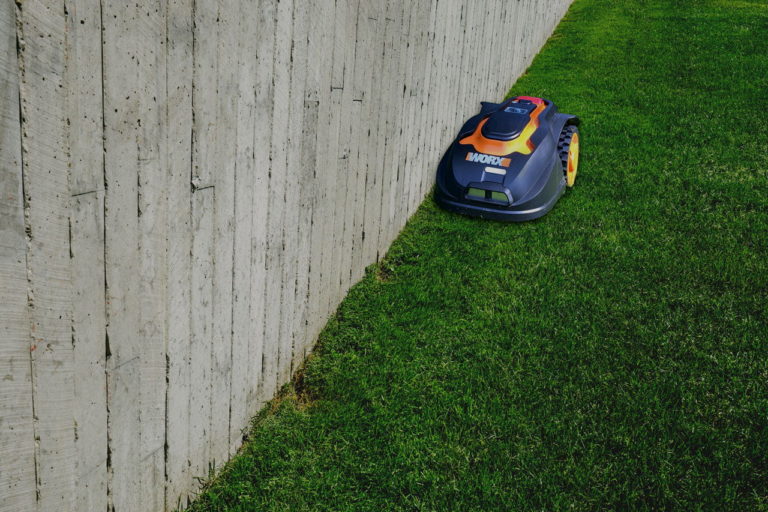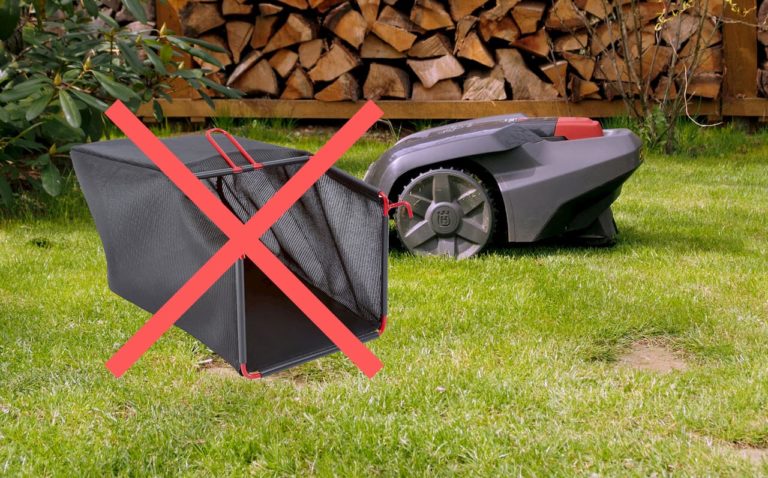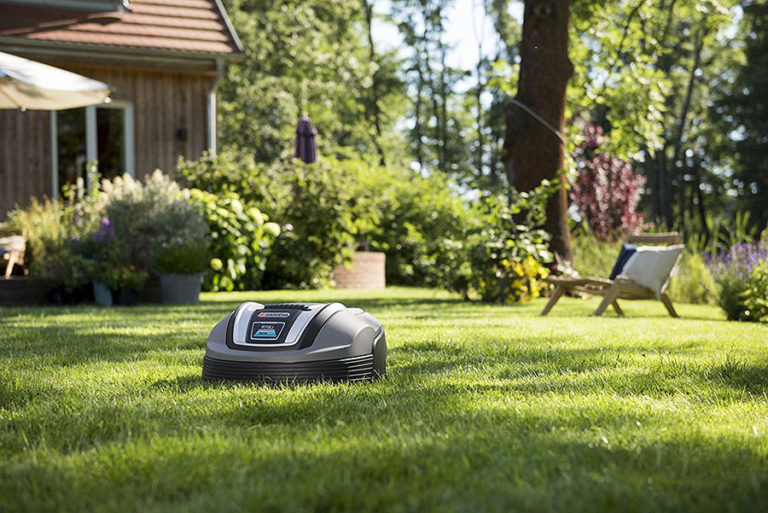When laying the boundary wire at the edge of your lawn, are you unsure of the best distance to choose? You are not alone, because despite the manufacturer’s manuals, there are always some questions. Especially since the ideal distances also vary between the models.
What distance should be chosen between the boundary wire and the lawn’s border? When choosing the distance between boundary wire and the yard’s edge, a distinction must be made between 3 different cases. Here are some examples of what some ideal distances may look like, but this is by no means a universal one:
- Wall, fence: 14 inches
- Flower bed, small hill; 12 inches
- Paving stone, edging stone: 4 inches
The distance of the boundary wire when flower beds and small hills are concerned can vary widely depending on the model of the mower and depends on the position of the wheels under the body.
But why do you need different distances for the boundary wire? What lawn features make a difference?
Contents
Why are there differences in distance between boundary wire and the edge of the lawn?
When choosing the correct distance between the boundary wire and the edge, the type of edge is important. This is due to the fact that the robotic mower can drive over the edge in some cases. But let’s start at the beginning:
The first thing you need to know: The boundary wire limits the area where the mowing robot can drive. I will not go into the exact function of the boundary wire, as I have already done so in this article, but it is important that the mowing robot does not just drive up to the boundary wire, but slightly over it.
In most cases, the mowing robot moves far enough over the boundary wire that it is exactly in the middle of the cable. This means that there must be enough space beyond the cable, i.e. between the cable and the outer edge of the yard, so that the mowing robot can drive along it with half the width of its body beyond the cable.
Now, however, it is often the case that the wheels are positioned slightly further inwards, or the body of the mowing robot is positioned slightly farther above the wheels. At certain places there are situations where these such models can drive with the body passing over a very low edge, but not the wheels.
In other places, the robotic mower can also drive over the edge of the lawn with its wheels without any problems. Here, you can place the boundary wire so close to the edge that the mowing robot really does mow the entire lawn to the edge, but at the same time far enough away that it does not drive unnecessarily far over the edge.
What is the minimum distance between a boundary wire and a wall?
The minimum distance a boundary wire can be from a wall or other fixed obstacle may vary from model to model. For many models the distance should be 14 inches. For some larger models, however, you may need to select a greater distance. For example, for the large WORX Landroid L models, you must choose 18 inches as the minimum distance to walls and the like. The distances in this scenario do not vary too much between the models.
What should the distance be to flower beds?
With some borders at the edge of your lawn, the robotic mower can drive its body over the edge while the wheels remain on the lawn. For example, some flowerbeds are designed to be slightly lower than the lawn, so you have a bit of a small step down from the lawn to the flowerbed.
Here the mower can get stuck, for example, if it has driven down this small step with its front wheels and attempts to reverse its way back up to the lawn.
So, while you can choose a slightly shorter edging distance in these areas than for a wall or fence, it should not be too much shorter. How much shorter this distance can be depends on how far the body hangs over the wheels at the front of the mower.
Steps at the edge of a flower bed can also go up in the same way. You may have a raised flower bed that is so low, the body of the robotic mower can just barely make it over the edge, but can’t make it over with its wheels, bumping into it instead.
Here there can be much greater differences in ideal distance between the various models, as this difference is due to the design of the mower.
For example, while the HUSQVARNA Automower 305 (2020 Model) needs a distance of 12 inches, 8 inches is sufficient for the MCCULLOCH Rob 1000. The position of the driving wheels can provide a rough guide.
A robot with a front drive like the Rob 1000 usually can handle a shorter distance than those with a rear drive like the Automower 305. If you are unsure about the correct distance for your model, this information can almost always be found in the manual of each individual model.
If you want your robotic mower to be able to move closer, or you want to lay the boundary wire closer, you can use lawn edging stones. If this is too much effort for you, you can also try to level the step with earth so that the mowing robot cannot get stuck on the step.
What is the appropriate distance to ground level boundaries?
If the boundaries are at ground level, you can choose a much smaller distance, as the robotic mower can drive entirely over the edge of the lawn.
Such edges include paving stones, cement or asphalt paths, lawn edge stones, and earth or sand at the level of the lawn. Here your mower can simply drive onto the edge. The big advantage is that it can also mow the lawn completely up to the edge here, as it can drive over the edge so far that it is able to reach the edge of the grass with the mower.
By the way, if you want to know more about how much grass different models of mowing robots leave on the edge of your lawn, you should definitely read this article.
Typical distances between such ground-level boundaries and the boundary wire are between 2 to 4 inches. There is not much difference in this distance among models.
What are the exceptions to the usual distances between the boundary wire and the edge?
When choosing the right distance for your boundary wire, you may have to deviate from the above rule in some cases. For example, in very tight curves and corners, the robotic mower may drive over the edge of the lawn despite the correct distance being selected, or corner against a wall or fence.
So, you should leave a little more distance at corners and tight curves. It is sufficient to add up to 2 inches.
In addition, the boundary wire of almost all robotic mowers must not be below a slope that exceeds a certain gradient. In most cases the limit here is a 10% gradient. If your lawn ends on such a slope, you will unfortunately have to lay the boundary wire differently, so that the robotic mower still has enough room to slow and stop before reaching the boundary wire.
This is to prevent the mowing robot from accidentally running over the boundary wire at the end of a steep slope. In addition, many mowing robots find it very difficult to turn at the end of a slope when they hit the boundary wire, because they drive up the slope in reverse. When turning, they often slide off and damage the lawn.
In this case you may need to lay the boundary wire much further inside the edge of the lawn.
With lawn edging stones you can lay the boundary wire very close
Lawn edging stones enable you to lay the boundary wire very near the edge of your lawn, as the robotic mower can drive over the level lawn edging stones with its wheels. The advantage here is that the lawn robot can really truly mow your lawn to the edge, which it cannot do otherwise.
I think that if you try to have a mowing robot take over the work of mowing your lawn, you should also invest that little bit of time and money and lay lawn edge stones, because otherwise you will always have to trim the edges of the lawn yourself, which partially defeats the purpose of having a robotic mower.
Related questions
Which tool is suitable for laying the boundary wire? The most important tool for laying the boundary wire is a hammer. A wooden hammer, rubber mallet or non-kickback soft-face hammer are best as they cannot damage the boundary wire during installation. When laying the boundary wire underground, a lawn edger, a simple spade or a cable laying machine can also be used.
Also interesting: 10 useful tools for laying the boundary wire
How is the boundary wire extended? To extend the boundary wire, a so-called cable connector is required. The two ends of the boundary wire are inserted into this connector before it is pressed together with a pair of pliers.Also interesting: How to extend the robotic mower boundary wire





